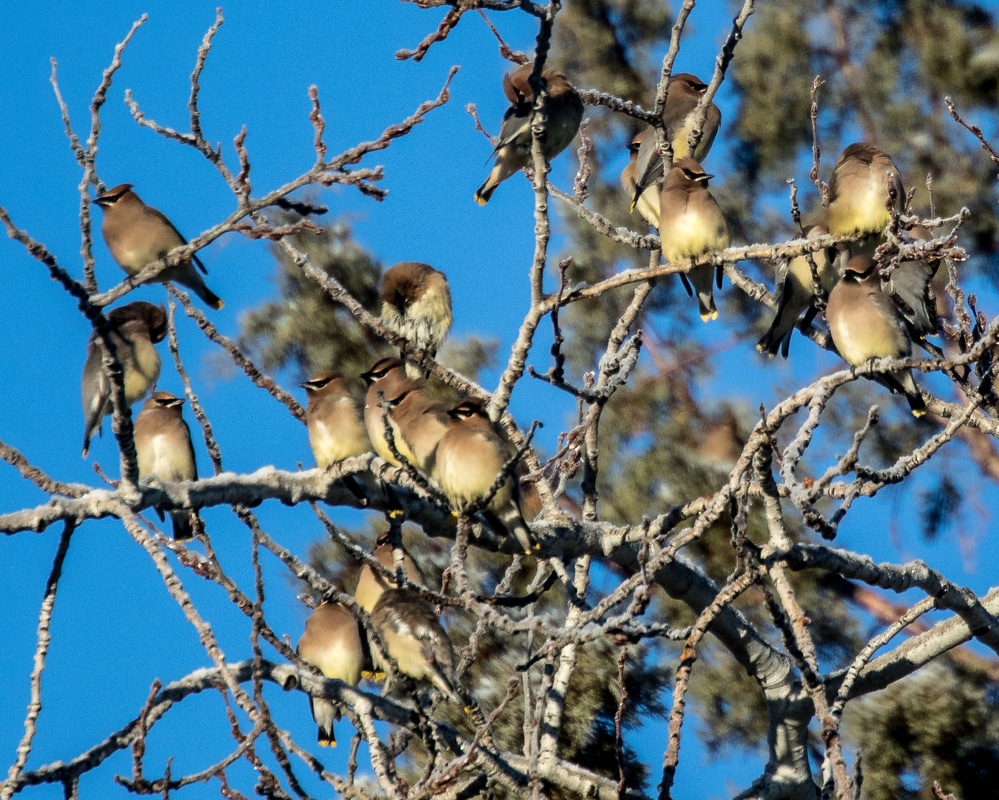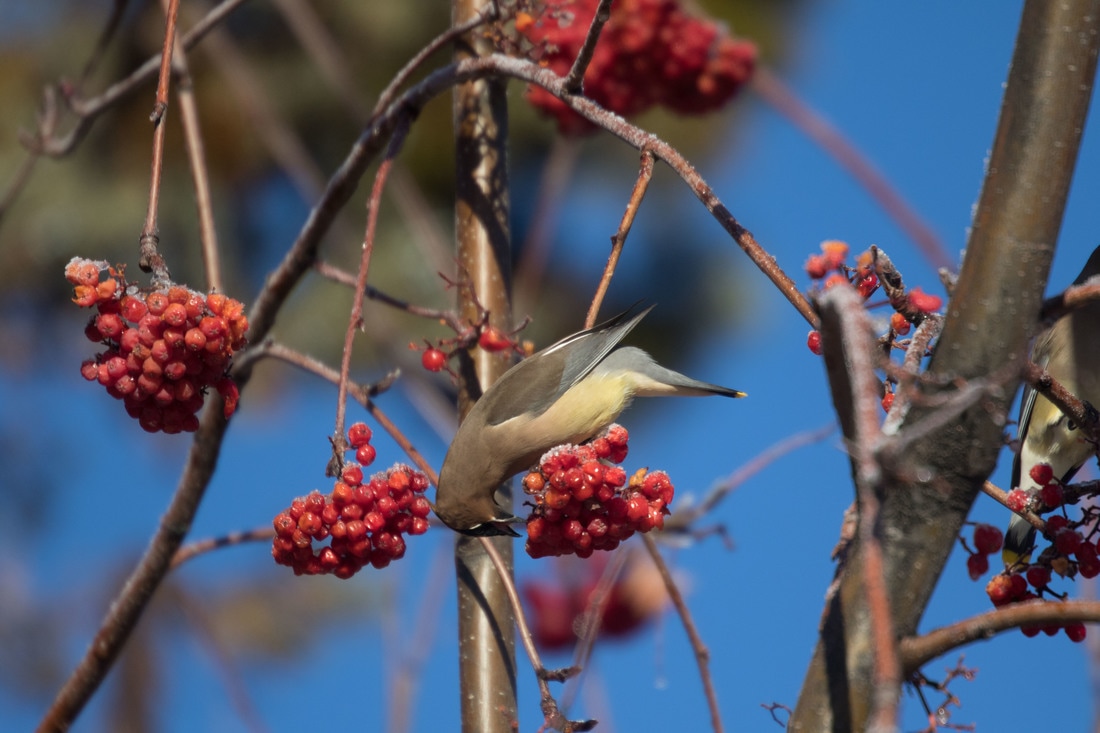Cedar Waxwing
I cannot say it better than the Cornell Lab of Ornithology website, ". . . . . .the Cedar Waxwing is a silky, shiny collection of brown, gray, and lemon-yellow, accented with a subdued crest, rakish black mask, and brilliant-red wax droplets on the wing feathers. In fall these birds gather by the hundreds to eat berries, filling the air with their high, thin, whistles. In summer you’re as likely to find them flitting about over rivers in pursuit of flying insects, where they show off dazzling aeronautics for a forest bird."
These photographs were captured in December of 2016 on the Deschutes River in Bend, Oregon, just east of the Cascades and Mt. Bachelor. I did not try to count the size of the flock, but upwards of 100 is likely. They were sharing the riches with an equal size flock of American Robins. These images are a little bit soft, likely a product of my lens choice for a road trip. Photo Geeks: see this link to my December post for more details.
These photographs were captured in December of 2016 on the Deschutes River in Bend, Oregon, just east of the Cascades and Mt. Bachelor. I did not try to count the size of the flock, but upwards of 100 is likely. They were sharing the riches with an equal size flock of American Robins. These images are a little bit soft, likely a product of my lens choice for a road trip. Photo Geeks: see this link to my December post for more details.
Above, early morning, birds warming up in the sun immediately adjacent to the berry laden ornamental. Below, resting between courses.
Below: bird feeding on berries. They swallow the berries whole.
Cedar Waxwings winter as far south as Central America. They are not common in Tucson, but I have seen them in Cave Creek Canyon, see this post.
Cedar Waxwings winter as far south as Central America. They are not common in Tucson, but I have seen them in Cave Creek Canyon, see this post.





